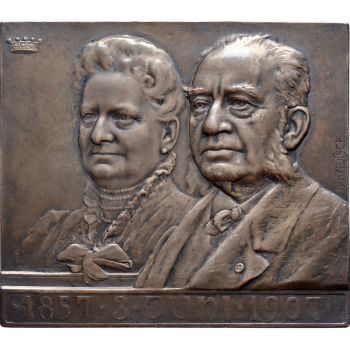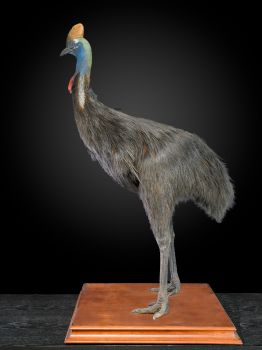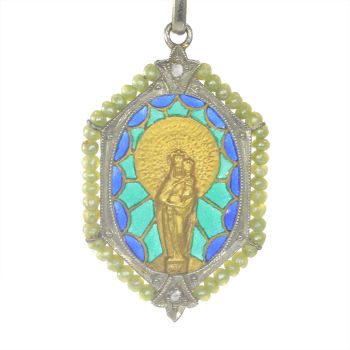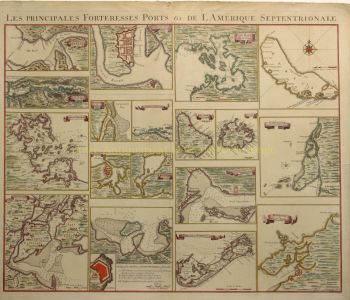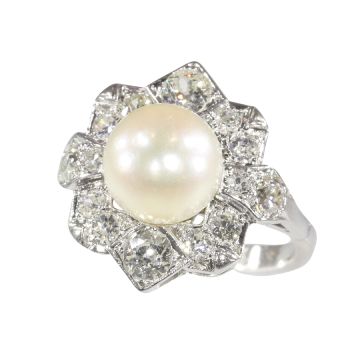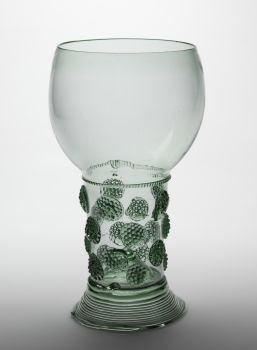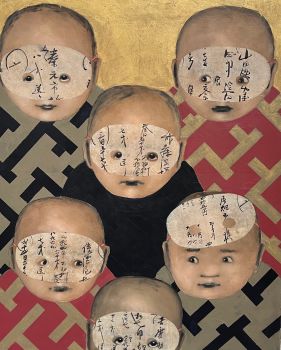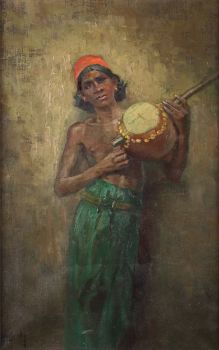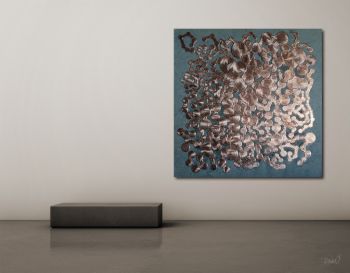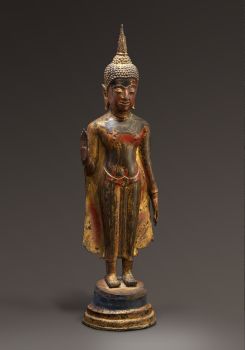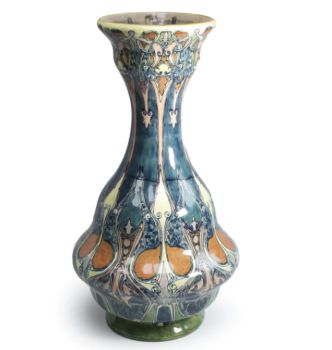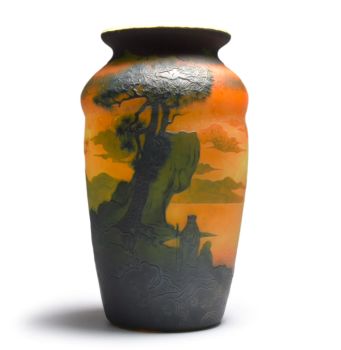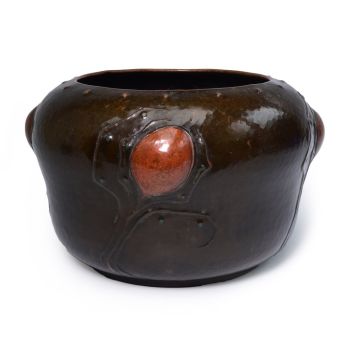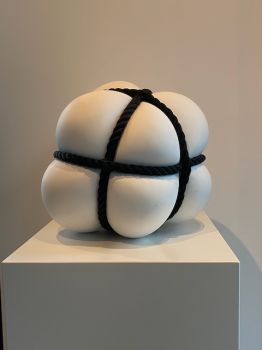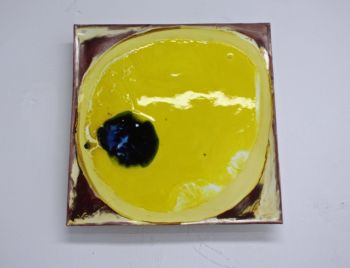Two Chinese porcelain famille rose Mancerina plates, Qianlong Qing dynasty c. 1770 Chinese export di 1770
Artista Desconocido
PorcelanaPorcelana china
3.50 ⨯ 21.50 ⨯ 21.60 cm
ConditionGood
Precio a consultar
Menken Works of Art
- Sobre la obra de arteA pair of two famille rose trembleuse stands or chocolate cup holders for the Spanish and Mexican market, ‘mancerina’.
China, Qianlong period, c. 1770.
The mancerina of molded scallop shell form, on raised feet with refined overglaze hand painted famille rose decorations.
These ornate, unusually large saucers with a cupholder in the centre (which are missing in this case) were special pieces made for serving chocolate. It was invented by a Spanish grandee, in Mexico, in the seventeenth century and was named after the man who had invented it, Pedro de Toledo, 1st Marquis of Mancera, who served as Viceroy of Peru from 1639 to 1648.
Called mancerina, the cup holders were designed to catch spilled liquid and help the drinker avoid burning their fingers on a hot cup. The tray could in turn be used to hold pastries. Mancerinas were first made in silver in colonial Mexico and Spain and later copied in ceramics, with models of these pieces sent to Chinese porcelain workshops.
In conclusion, these mancerina are a testament to colonial history and mutual influence between cultures connected via sea trade routes from West to East.
Dimensions (few mm varying in size):
Height 3.5 cm, width 21.5 cm, depth 21.6 cm.
Condition (DM for more pictures):
The first plate with two chips under the rim, the bottom with a star-shaped hairline in the middle (not showing on the top), the raised rim in the center on the top with a small scuff, furthermore in very good condition.
The second plate with a star-shaped hairline in the middle (also showing on the top) and a small hairline to the central border.
Identical mancerina with matching cup can be found in the following museum collections:
-Museo Nacional de Historia, Mexico City, illustrated by M. Priyadarshini, Chinese Porcelain in Colonial Mexico, p. 123, fig. 4.9.
-Carnegie Museum of Art, Pittsburgh, United States, accession no. 70.59.1
-Museum Amparo Puebla de Zaragoza, Mexico
-Museo Nacional del Virreinato, Tepotzotlán, Mexico
-Asian Civilisations Museum, 2022-00043
For a lecture in Spanish by Museo Amparo about this specific mancerina, click on the following link:
https://www.youtube.com/watch?app=desktop&v=T2exETvFg00
Also see:
https://www.youtube.com/watch?v=kJUmINIE1VQ
Inv. No: MW8 - Sobre el artista
Puede suceder que un artista o creador sea desconocido.
Algunas obras no deben determinarse por quién está hecho o por (un grupo de) artesanos. Algunos ejemplos son estatuas de la Antigüedad, muebles, espejos o firmas que no son claras o legibles, pero también algunas obras no están firmadas en absoluto.
También puedes encontrar la siguiente descripción:
•"Atribuido a …." En su opinión, probablemente una obra del artista, al menos en parte.
•“Estudio de….” o “Taller de” En su opinión, una obra ejecutada en el estudio o taller del artista, posiblemente bajo su supervisión
•“Círculo de…” En su opinión, una obra del período del artista que muestra su influencia, estrechamente asociado con el artista pero no necesariamente su alumno.
•"Estilo de …." o “Seguidor de…”. En su opinión, una obra ejecutada al estilo del artista pero no necesariamente por un alumno; puede ser contemporáneo o casi contemporáneo
•"Manera de …." En su opinión una obra al estilo del artista pero de fecha posterior
•"Después …." En su opinión, una copia (de cualquier fecha) de una obra del artista
•“Firmado…”, “Fechado…” o “Inscrito” En su opinión, la obra ha sido firmada/fechada/inscrita por el artista. La adición de un signo de interrogación indica un elemento de duda.
•“Con firma…”, “Con fecha…”, “Con inscripción…” o “Lleva firma/fecha/inscripción” en su opinión la firma/fecha/inscripción ha sido añadida por alguien que no es el artista
¿Está interesado en comprar esta obra de arte?
Artwork details
Related artworks
Artista Desconocido
RARE TAXIDERMY OF AN ADULT SOUTHERN CASSOWARY-CASUARIUS CASUARIUS1990 - 2000
Precio a consultarSpectandum Gallery
1 - 4 / 12HUGO VILFRED VON PEDERSEN
Gadesanger fra Singapore (Musician from Singapore)1870 - 1959
Precio a consultarZebregs & Röell - Fine Art - Antiques
Artista Desconocido
Chinese carnelian agate vase or brush washer, 18th/19th century, Qing dynasty1720 - 1820
Precio a consultarMenken Works of Art
1 - 4 / 9- 1 - 4 / 24
Artista Desconocido
Series of 6 Chinese cups and saucers (Yongzheng period)1722 - 1735
Precio a consultarKuipers Kunst & Antiek
Artista Desconocido
A large Japanese Imari porcelain 'VOC Groningen' dish1800 - 1925
Precio a consultarZebregs & Röell - Fine Art - Antiques
1 - 4 / 24Artista Desconocido
Chinese gilt bronze censer, Xuande mark, 18th century, Qing dynasty18th century
Precio a consultarMenken Works of Art
Artista Desconocido
Chinese carnelian agate vase or brush washer, 18th/19th century, Qing dynasty1720 - 1820
Precio a consultarMenken Works of Art
1 - 4 / 5






